
কলকাতা ময়দানঃ অষ্টাদশ/ ঊনবিংশ শতাব্দী
The Beginning
After winning back Calcutta, finally defeating Siraj at Plassey, the English East India Company decided upon two things: (1) Replacement of the their old fort with a new one – mightier and better-planned, and (2) Expansion of Calcutta southward.
The onslaught of Nabob’s army wrecked the already overcrowded settlement. The situation called for immediate renovation and expansion of the town toward pastoral Govindpore where the new Fort William was to be erected. ‘Govindpore village, surrounded as it was by waste lands formed a natural esplanade.’ [4] The old Fort had no esplanade for guns, which happened to be one of the reasons for its fall. [10] About a mile away from the old Fort the construction of the second Fort William set off in 1758. The new Fort, essentially a military establishment, and not a fortified factory of English traders as the old Fort was styled, costed the EEIC some two million sterling [5]. The chosen site of the Fort was on the river-bank of village Govindpore, considerably south of the old Mint.

Formerly, the village was the primary seat of the Sheths and the Bysaks. In early 16th century, four families of Bysaks and one of Sheths founded the village of Govindpore, after the name of their tutelary deity, Govindaji. They built a shrine of the Vaisnav deity on the site where the New Fort William now stands, not far from the old Kalighat temple. [17]. Govindpore had only 57 bighas of inhabited land out of 1,178 bighas. The entire population of the flourishing village was removed to make room for the new Fort with its unobstructed field of gun fire that completed in 1773. The inhabitants were compensated by providing lands elsewhere, expending restitution-money – the fund Siraj-ud-Dowlah recompensed for the damage he did. The Sheths moved to Cotton Bale Market, (Bengali: সুতানটি হাট ), in Burrabazar. The jungle that cut off the village of Chowringhee from the river was cleared giving way to the wide grassy stretch of ‘Maidan of which Calcutta is so proud’.
Expansion of Town Calcutta
The denizens of town Calcutta never before felt like going further than Respondentia Walk, lying beyond Chandpal Ghat, or the fish-pond near Lal Dighi as ‘there was too wholesome a dread of thieves and tigers, to induce them to wander into the grounds of the neighboring zemindars who were the Robin Hoods of those days.’[13] In 1756, when Seraj-o-dowlah took the place, only seventy houses were inhabited by Englishmen. The sudden development activities at Govindpore encouraged them to look forward for a change in lifestyle. The prospect of living lavishly in countryside bungalows in the neighborhood of the New Fort site attracted the white population. Gradually they moved out to settle in village Chowringhee adjacent to Govindpore separated only by the ancient pathway from Chitreswari temple at extreme North to Kalighat at South. As already we noticed, Esplanade and Maidan both are being used indiscriminately for the sprawling green square around the New Fort William.

Maria Graham in her, Journal of a residence in India, penned a picturesque description of Maidan as she found in 1810. The road which leads past Fort William, connecting Garden Reach with Calcutta, is called the Esplanade. It is shaded, by umbrageous trees, and forms a very pleasant drive in the evening. The light air coming off the water is cool and grateful to the multitudes in search of air, change, or exercise. This esplanade is terminated by a very handsome colonnade ghat, which forms a most classical and pleasing object to the eye, as well as a most convenient and useful accommodation to the natives for the performance of ablutions in the river, to which the bathers descend by a flight of steps. It was built solely for this object by a pious and opulent Hindoo. [9]
The snow-white paddy bird, with elegant and outstretched neck and stork-like dignity, walks carelessly, unheeded, undisturbed, unscared he pursues his watchful employment of fishing in the shallows, with an almost domestic familiarity and fearlessness of the presence of man. [12]
Topography
Maidan, the chief open space in Calcutta between Government House and Garden Reach, is also called the Esplanade (Bengali: গড়ের মাঠ), that is, plain ground in front of a fort, in which attackers are exposed to the defenders’ fire. Calcutta Maidan, or the Esplanade of the New Fort, never had an occasion to partake defense task but acts as a fulfilling centre of entertainment and refreshment ever since its formation.
Maidan virtually covers, besides small portions of Birjee and of Chowringhee, the entire area of Govindpore, which began at the Northern boundary of Dhee Calcutta and ended at Baboo Ghat, and then went up to the Govindpore Creek, or Tolly’s Nullah at the extreme end of the English zamindari. It was ‘immediately to the South of Surman’s Gardens, next to the General Hospital building. At West, Maidan includes King’s Bench Walk with a row of trees separating it from the riverbank between Chandpaul Ghaut and Colvin’s Ghaut, or Cucha-goody Ghaut, as it was called then. At North, Esplanade Row, from Chandpaul Ghaut, runs into Dhurumtollah in a straight line past the Council House and the old Government House standing side by side.
The borings made in the Fort, in 1836-40, under the superintendence of Dr. Strong and James Prinsep, have shown that the ocean rolled its waves 500 feet beneath the surface of the present fort, and in 1682 an ancient forest existed in that locality. [1] Early 1789, Government resolved on filling up the excavations and leveling its ground. The plan was prepared for the benefit of Calcutta in general, and of the houses fronting the Esplanade in particular. The plan extended to drain the marsh land, in expectation that the digging a few tanks will furnish sufficient earth and thus save the project cost and time. A new tank was made in 1791 at the corner of Chowringhee and Esplanade, which existed till the dawn of the twentieth century.

Talaos or Tanks
The City of Calcutta is supplied with good drinking water, from a considerable number of large ponds mostly situated towards the Chowringhee quarter. Those facing Chowringhee Road were constructed by Monohur Dass, the chief member of the Shah Nowputee Muhajun of Benares in Lord Cornwallis’s time. [2]
A series of artificial lakes (tanks) stretched down the length of Chowringhee Road: the Dhurrumtolah Tank at the northern limit; the Manohardoss or Colinga Tank with its corner pavilions opposite Lindsay Street; the General’s tank opposite Park Street; Elliott’s Tank facing Harington Street previously ‘Graham Street’; and at south-end the Birjee Tank.
Dhurrumtollah Tank

This is a view from the north end of Chowringhee Road, beside the carriage stand, looking north-west across the Dhurrumtollah Tank, towards the façades of the houses along Esplanade Row, with Government House at the extreme left. The flat-fronted, verandahed building behind the premises of William Coish & Co is the Adjutant-General’s offices. Among the commercial premises on Esplanade Row are Mountain’s Hotel, Madame Nielly (French milliner), Payne & Co’s Belatee Bungalow and Thomson & Company.
The view looks south along Chowringhee Road with impressive array of private and public buildings on the far side of Maidan.
Monohurdass’ Tank


The General’s Tank
The General’s Tank was one of the three large artificial reservoirs in the Chowringhee district of Calcutta. It was just south of the junction with Park Street. This print also shows the house of Thomas Babington Macauley, who was a Law Member of the Supreme Council of India, and worked on the reorganisation of the Indian legal system necessitated by the New India Act of 1834. He lived at number 33, Chowringhee Road, from 1834 to 1838. Thereafter the building became the headquarters of the Bengal Club.This lithograph is taken from plate 21 from ‘Views of Calcutta’ an album of paintings by William Wood.
Elliott’s Tank

Elliott’s Tank facing Harington Street, previously ‘Graham Street’, situated between the General Tank and Birjee Talao. The tank was named after Sir Charles Elliott, Lieutenant-Governor, 1890-1893.
FORT-GATES and ROADS
The Fort occupied a large chunk of Maidan around the centre with as many as seven gates, each having its own approach road across Maidan, namely, the Calcutta Gate leading out to the Eden Gardens, the Plassey Gate facing south of Government House; the Chowringhee Entrance Gate leading out of the road entering Park Street; the Chowringhee Exit Gate leading out of the road entering Park Street; The Hospital Gate leading out of the Race Course; the St. George’s Gate facing north of Hastings; and the Water Gate facing the river near the Gwalior Monument. It is only in recent years we have had any road outside the fort. Pathways thread their way across the Maidan which has been cleared of the jungle. The oldest among them is the ‘Course’ made to take the air in’. The road was, however, full of dust, yet considered one of the airiest and pleasantest drives in Calcutta, extending from the Cocked Hat on the north to the Kidderpore Bridge. The Course, so called as being a coss or two miles in length, is described in 1768, as being ‘out of town’ in a sort of angle. [13]
The broad gravelled walk on the west side of that portion, known as the Red Road, then called Secretary’s Walk, constructed in 1820. To the south of the Fort ran the Ellenborough Course. The Vice-Roy Lord Northbrook led the grand procession this way taking the Prince of Wales from the Prinsep’s Ghaut to the Government House. It was a fine raised and turfed ride for horse exercise; and towards the cast, the Race Course, commenced in 1819.[6]

RIVER GHAUTS
Another avenue of trees was planted, about the time of the Lottery Committee, on the river-bank from Chandpal Ghaut to the New Fort. Its position was indicated by the row of fine trees which stood south of Baboo Ghat. This was known as Respondentia Walk – the resort of those fond of moonlight rambles, and of children, with their train of servants. ‘Calcutta society, alighting from carriages and palanquins, promenaded in the cool of the evening’. Dogs and horses were not allowed to disturb the harmony of polite conversation, by an order of the Governor-General in Council forbidding persons accompanied by dogs to enter Respondentia Walk. [4] The Esplanade on the banks of the Hooghly, thus provided the fashionable promenade of Calcutta a Hygeian Walk, as William Jones called. [1] Where the Bank of Bengal stands on the bank of the old Creek, at Cutcha- goody Ghaut, an avenue of trees ran along the river-bank to the Supreme Court, as King’s Bench Walk. The Walk was exclusively reserved for the English inhabitants from 5 to 8 o’clock every evening, sentries being posted **near the sluice-bridge” to prevent the entrance of natives.
[6] In 1823 the Strand road was formed, which led to a great sanitary improvement. This road has been widened at the expense of the river, so that where the western railing of the Metcalfe Hall stands, there were, in 1820s, nine fathoms of water. [13]
EDEN GARDENS

The site was initially named Auckland Circus Gardens, which stands at the northern-end of Maidan toward Calcutta Gate. The Gardens came into being when the Governor General, Lord Auckland, desired to create a circus and a garden. A pleasure ground with an oblong tank in center was laid out on this site generally resorted to for riding and recreation. The inhabitants are indebted to the liberality and taste of the Misses Eden, sisters of Lord Auckland. There was a Band-stand, where the Town Band or the Band of the European Regiment stationed in the Port, discourses sweet music every evening. Of late years the Gardens have been greatly enlarged, and laid out with winding paths and artificial water, interspersed with a profusion of beautiful flowering trees, and shrubs —a pleasant place for a morning or evening stroll. In the Gardens is a Burmese Pagoda, removed after the last war in 1851. and re-erected there in 1856.
STATUES OF RAJ PERSONAGES
In the green of Maidan there had been several installations of statues of Governor-Generals, and Heroes of the British Raj. While each statue was a perfect specimen of Western art, not all the personalities were found equally adorable; few were hated by the native subjects. The statues remained scattered all over Maidan till the end of colonial era, and thereafter replaced by figures of Indian national leaders. The old ones are now archived at the Flagstaff House in Barrackpore. Some nice photographs of the statues curated by DBH Ker in recent time can be seen in Flickr.[12] The details of the statues are available in Raj Bhavan(WB) Occasional Paper-4.[15]

The statue of Outram on horseback set in Calcutta Maidan was one the finest sculptural specimens modeled by John Foley in 1874. The statue inspired Barbara Groseclose, the art historian, to remark that ‘doubts and anxieties, as well as assumptions about their own place in Indian life, bear strongly on the roles and achievements for which the British sought or received commemoration ..’ See Outram Institute Puronokolkata
EDIFICES IN MAIDAN
The Maidan has come into existence when the Company built the second Fort William in Govindpore in 1773. The General Hospital was already constructed at the outskirt in 1770 near the old Jail, which was demolished to make room for construction of the Cathedral in 1839. The Race Corse Stadium and Ochterlony Monument followed in 1809 and 1863 respectively. Victoria Memorial and the Curzon Park – the two integral constituents of Maidan created in 20th century – are outside the scope of the present discussion.
FORT WILLIAM, GOVINDPORE
The works of the Fort were planned by an engineer named Boyer. Undoubtedly it is the 2nd Fort William, the regular architecture and commanding position of which are equally conspicuous. This fortress completely commands the town. Evidently, it was designed to hold the inhabitants of Calcutta, in case of another siege, as permission was originally given to every inhabitant of the settlement to build a house within the fort. But entertaining views of the comfort of living in garden houses discouraged the people to accept this privilege. They preferred living in developing Chowringhee neighbourhood. In 1756 the plain were occupied by native huts, and by salt marshes, which afforded fine sport to buffalo hunters. [1]

HOSPITAL
The first hospital was erected in 1707 for soldiers and sailors, was located in the present Gerstein’s Place, near St. John’s Church, and lasted for nearly half a
century until the sack of Calcutta in 1756. The Company’s second hospital was a make-shift structure in the Old Fort, and was used for about thirteen or fourteen years till 1770. The project was mooted at a Consultation of the Board over which he presided on the 29th September, 1766. The hospital that stood in 1707 beside the old graveyard in a most insanitary site at Gerstein Place was removed ‘into the country’ at the far end of Maidan. The house was initially purchased in 1768 from a native gentleman for the purpose.

The East India Company (Calcutta Council) purchased the plot of land with a garden house from Rev. John Zacharias Kiernander at a cost of Rs. 98900.00 along with an adjoining plot belonging to a Bengali Gentleman. Gourchurn Tarsor (Tagore?) was the only Bengali among those who offered their property on sale, the others being James Dollas and Domingo de Rosario. After various alterations and additions including two other buildings erected in 1770 on the-then Lower Circular Road. The hospital renamed as the Presidency General Hospital was open for admission of general public. In 1795 two new wings and some other additions and alterations were made to equip the hospital with latest medical technology. [14]
ST PAUL’S CATHEDRAL

The St Paul’s Cathedral was designed in the Indo-Gothic style by William F Forbes. Forbes, a military engineer who was later promoted to Major General, was also responsible for the design of the old Calcutta Mint where he held the post of Mint Master for a time. It was through a long course of discussions the site for its construction was decided. In favor of the site finally selected, a plebiscite of the most representative bodies and organizations in Calcutta voted overwhelmingly. The Cathedral has been erected on the site of the hideous and obsolete structure of the old Jail that was demolished by the Government at its own cost. [7] Construction of the cathedral began in 1839, when the foundation stone was laid by Daniel Wilson, Bishop of Calcutta, and completed in 1847. The tall central spire and square tower beneath were inspired by a similar feature at the twelfth century cathedral in Canterbury, England. The upper portion of the tower, which originally reached a height of sixty-one meters, was destroyed in an earthquake in 1934.
Source: ‘Photographs of India and Overland Route’ by Oscar Mallitte in 1865.
RACE COURSE
The Race Course, which originated as the Course or promenade of Calcutta is one of the finest in the country. Racing was started at the Akra farm at the foot of Garden Reach from 1780, if not earlier. There at that time, the Nabob of Oudh, deposed by the British, and his descendents lived in their palatial garden houses. In 1812, the new course was laid out in Calcutta roughly where it is located today.

Lord Wellesley, during his administration, set his face decidedly against horse-racing and every other species of gambling. His influence threw a damp on it for many years, though last century a high value was attached to English jockeys, and the races were favorite subjects of expectation with the ladies. With the amusement of the turf came the spirit of betting. [13] One of the most significant events in the history of Calcutta racing took place in 1847 when the Calcutta Turf Club was officially born. [See: Royal Calcutta Turf Club https://puronokolkata.com/2014/01/06/royal-calcutta-turf-club-calcutta-1845/%5D
OCHTERLONY MONUMENT

The Ochterlony Monument is an iconic landmark of Calcutta. It was designed by J. P. Parker and erected by Burn & Company in 1828, on the north-eastern side of Calcutta Maidan. The Monument was dedicated to the memory of Major-general Sir David Ochterlony, a commander of the British East India Company. He was commemorated for his successful defense of Delhi against the attack of the Maratha Yaswantrao Holkar in 1804, and also for the victory of the East India Company in the Anglo- Nepalese War of 1814 to 1816. The expenditure regarding the construction and the foundation of the monument was paid from the public fund. The ‘Cloud kissing Monument’ as Mark Twain called it, is 48 metres (157 ft) high.
It has a foundation based on the Egyptian style. The column is a combination of styles with a classical fluted column, a Syrian upper portion, and a Turkish dome. It has two balconies at the top. The top floor is accessible by a serpentine staircase of 223 steps.
LIFE IN MAIDAN
Maidan is so many things to so many people. Apart from army parades, and drills of mounting police, there are washermen who wash clothes and themselves in its ponds (see Dhopa Pukur in Mark Wood’s map), shepherds who tend their flocks, citizens taking their morning walks, and the last vestiges of the horse-drawn hackney carriages plying its fringes entertaining merrymakers and businessmen to make money. When Jamshedji Framji Madan entered the ‘bioscope’ scene in 1902, he began to screen films in tents, one of which was set up on the Maidan.
Chowringhee, the new township next to Maidan, is a place of modern creation. In 1768 there were a few European families enjoyed ‘out of town’ living. They always looked for opportunities of entertainment and recreation – including the out-door varieties held at Maidan, like Ballooning, Circus, Bicycle Race, Horse Race, Polo, Cricket and such exciting sports of the day. A large stretch of the Maidan is dotted with small greenish tents belonging to sports clubs.

BALLOONING
Balloon ascent was indeed a novelty in India. On 30th July, 1785, a balloon, measuring six feet in diameter, and filled with rarefied air was let off from the Maidan. Mr. M’intle. the young gentleman who constructed the balloon, favoured the settlement with another exhibition next evening. The first ascent of a large balloon from the plains of Bengal took place on the 21st March, 1836.
CIRCUS
“Every now and then some adventurous ‘entertainer’ makes a tour of the country; but seldom, I fancy, with satisfactory results; and travelling circuses appear to meet with no better success”. An Opera Company which has been lately enlivening Calcutta, seems to be an exception to the general rule, being the best thing of the kind that has ever been seen in India. [3]. Chiarini’s Italian Circus performed in Calcutta in August 1880.
Around 1880, the cited playbill advertised Wilson’s Circus in Calcutta, featuring Edwin Moxon, who appeared with his Magic Tom-Tom act, and with the Moxon Brothers in their ‘wonderful balancing act’ with a pyramid of chairs. Around that time Royal Italian Circus where Chiarini, an Italian director performed in Calcutta. Professor Bose’s great Bengal Circus exhibited its shows at the Maidan in January 1900 in which Bir Badal Chand wrestled with a Royal Bengal Tiger.
POLO & GOLF
Polo has been played in the Maidan since 1861. The modern game of polo, though formalised and popularised by the British, is derived from Manipur where the game is known as ‘Pulu’. In 1862 the Calcutta Polo Club was established by two British soldiers, Captain Robert Stewart and (later Major General) Joe Sherer. They were inspired by the game in Manipur and later they spread the game to their peers in England. The club runs the oldest and first ever Polo Trophy, the Ezra Cup (1880).
Cricket & Football

Calcutta Cricket & Football Club, founded in 1792, is one of the oldest sports clubs in the world. The first formal cricket match played between the Etonians and the rest of the Civil Servants of the Company was played for two consecutive days on the green before the Government House in January 1804.
In the absence of a permanent venue, the Calcutta Cricket Club played its games on the esplanade between Fort William and Government House. By the 1820s, the members felt the need for a permanent ground. In 1825, the Calcutta Cricket Club managed to obtain the use of a plot of land on the Maidan. In 1841 the Club was relocated to the eastern boundary of the Auckland Circus Gardens. [See: Calcutta Cricket https://puronokolkata.com/2014/06/18/calcutta-cricket-maidan-calcutta-1792/%5D
Endnotes
The Maidan is deeply embedded in the Bengali psyche as well. It was fashionable for the Babus of old Calcutta to go for fresh air in the esplanade, or গড়ের মাঠ. Carey described the great show of fashionables in evenings at the Eaden Gardens out for the purpose of enjoying a drive—“eating the air (howa-khana) as the Indians express it.” [5] Rabindranath , in his reminiscences mentioned about the sports-loving public rushing to playground in Maidan riding on crowded tramcar footboards; how his elder brother, Jyotirindranath took his wife, Kadambari, on horse-back to Maidan for a promenade defying social taboos. Maidan has stood a mute witness to the unfolding history of the city until the beginning of the 20th century, when the Maidan spread out its huge stage to voice against British rule, supporting national agenda for freedom movements. In connection with the founding of Victoria Memorial Hall upon the Maidan, some anxiously felt that “…it needs but the smallest acquaintance with that great city to know that its inhabitants regard the Maidan as a virtuous woman regards her honour, any assault upon which must be repelled as the deadliest form of insult.” [7]
REFERENCES
-
- Anonymous. 1816. “Sketches of India ; Or,observations Descriptive of the Scenery, &c. in Bengal; Chapter 13.” London: Black, Purbury and Allen. Retrieved (https://books.google.co.in/books?id=tEcVAAAAQAAJ&pg=PA197&lpg=PA197&dq=“+Setting+aside+the+pleasure+one+natu-+“+rally+feels+at+the+termination+of+a+long+“+voyage,+and&source=bl&ots=RMNhJRJxhm&sig=woJs5KFQwm85BUFHXzP199w35-k&hl=en&sa=X&ved=0ahUKEwi3gfnAqtv).
- The Bengal and Agra annual guide and gazetteer. 1841. Calcutta: Rushton. (https://archive.org/stream/bengalandagraan00unkngoog#page/n10/mode/2up)
- Blanchard, Sidney Laman. 1867. Yesterday and Today in India. London: Allen. Retrieved (https://archive.org/stream/yesterdaytodayin00blan#page/n3/mode/2up).
- Blechynden, Kathleen. 1905. Calcutta Past and Present. London: Thacker. Retrieved (https://archive.org/details/calcuttapastand02blecgoog).
- Carey, William H. 1907. The Good Old Days of Honorable John Company, Being Curious Reminiscences … during the Rules of the East India Company, from 1800 to 1858; vol.2. Calcutta: Cambray. Retrieved (https://archive.org/details/in.ernet.dli.2015.116087).
- Cotton, Evan. 1907. Calcutta Old and New: A Historical and Descriptive Handbook of the City. Calcutta: Newman. Retrieved (https://archive.org/details/calcuttaoldandn00cottgoog).
- Curzon, Murquis of Keddleston. 1905. British Government in India: The Story of the Viceroys and Government Houses; Vol. 1. Retrieved (https://dl.wdl.org/16800/service/16800_1.pdf).
- Kerr, D B. n.d. Forgotten Statuary of the British Raj; A gallery curated by DBHKer (https://www.flickr.com/photos/23268776@N03/galleries/72157631880613097/?rb=1#photo_169640291
- Firminger, W. K. 1906. Thacker’s Guide to Calcutta. Calcutta: Thacker, Spink. Retrieved (https://archive.org/stream/thackersguidetoc00firm#page/n7/mode/2up/search/’socially+but+not+geographically).
- Graham, Maria. 1813. Journal of a Resdence in India. 2nd ed. Edinburgh: Costable. Retrieved (https://archive.org/stream/journalaresiden00callgoog#page/n6/mode/2up).
- Hill, S.Charles. 1902. List of Europeans and Others in the English Factories in Bengal at the Time of the Siege of Calcutta in the Year 1756 .pdf. Calcutta: GOI, Printing Press. Retrieved (https://www.google.co.in/url?sa=t&rct=j&q=&esrc=s&source=web&cd=13&cad=rja&uact=8&ved=0ahUKEwiuieCx3qbXAhVCLI8KHUvTBGcQFghbMAw&url=http%3A%2F%2Fasi.nic.in%2Fasi_books%2F9381.pdf&usg=AOvVaw2tZ5JJ8tHBx8o1QTmBzYWI%0A%0A).
- Hutchison, W. H. Florio. 1883. Pen and pencil sketches: reminiscences during 18 years’ residence in Bengal, ed. by J. Wilson. London: Marston. (https://archive.org/stream/penandpencilske00hutcgoog#page/n4/mode/2up)
- Long, Rev.James. n.d. “Calcutta in the Olden Time – Its Localities. Art.2 – Map of Calcutta.” (https://archive.org/stream/in.ernet.dli.2015.98350/2015.98350.Calcutta-And-Its-Neighbourhood_djvu.txt)
- Moir, D M. 1903. “Notes on the origin of the Presidency General Hospital, Calcutta” In: The Indian Medical Gazette; Feb, 1903)
- Raj Bhavan. Kolkata. 2007 [Barrackpore Flagstaff House] (Occasional Paper – 4)(https://www.google.co.in/search?q=Occasional+Paper+%E2%80%93+4%3A+Barrackpore&ie=utf-8&oe=utf-8&client=firefox-b&gfe_rd=cr&dcr=0&ei=hluIWpXuDrCcX-T_lsAD)
- Society for the Diffusion of Useful Knowledge (Great Britain). 1842. Calcutta: David Rumsey Historical Map Collection. London: Chapman & Hall. (https://www.davidrumsey.com/luna/servlet/detail/RUMSEY~8~1~21006~530098:Calcutta-)
- Wilson, Charles R. 1895. The Early Annals of the English in Bangal, Being the Bengal Public Consultations for the First Half of the Eighteenth Century … Vol. 1. London: Thacker. Retrieved (https://archive.org/details/in.ernet.dli.2015.63176).


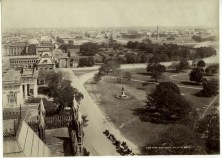



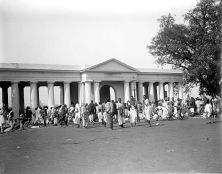


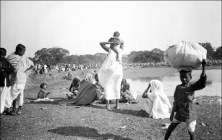



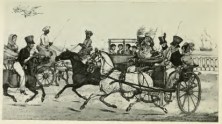
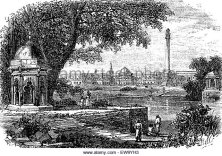

Thanks Janet. Feel much elevated by your kind words. As yet, I had no luck to read any of your famously written books, but I guess those speak of your love for history. Warm wishes
LikeLike